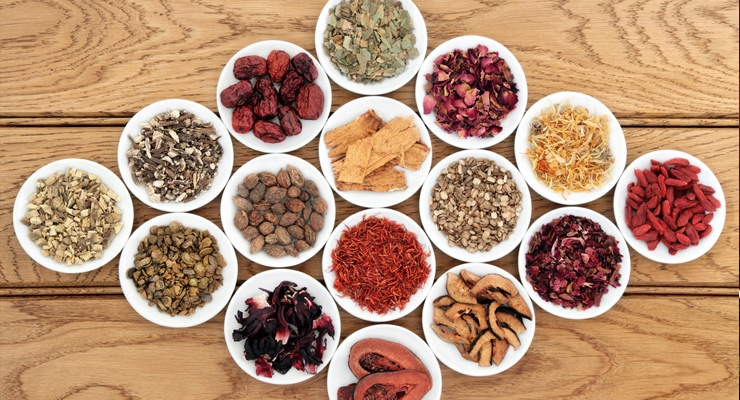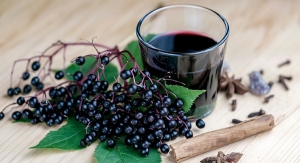Lisa Olivo, Associate Editor06.04.15
Specialty ingredients are used to add a specific benefit to the core recipe of a product, benefiting either production or the end consumer, according to experts at Euromonitor International. Such benefits can include an enhanced health profile, as well as improved taste, texture, appearance, shelf life or product image.
In a webinar titled “Opportunities and Challenges in Specialty Food Ingredients” on April 23, Euromonitor evaluated multiple specialty ingredients to see which ones are leading the overall market, and what trends are driving growth. The 15 different ingredients analyzed included acidulants and pH control/salts; botanicals and bioactives; cocoa ingredients; colors; cultures; emulsifiers; enzymes; fats and oils (specialty); flavors and flavor enhancers; high intensity sweeteners; polyol sweeteners; proteins; preservatives and antioxidants; polysaccharides and oligosaccharides; and vitamins and minerals.
From 2008-2018 the global market is expected to produce 27.2 million tons of specialty ingredients, accounting for a 5% share of total ingredient use. Euromonitor predicted a CAGR of 2.6% from 2013-2018 for these specialty ingredients.
However, John Madden, head of ingredients research for Euromonitor International, said it’s difficult to evaluate the popularity of such ingredients by bulk because some ingredients, such as cultures for example, will be used at much smaller doses, when compared to proteins, which will be used in larger amounts.
To get a better analysis of the market, Euromonitor compared the growth among various natural and health ingredients to determine which are leading the pack. Results showed botanicals/bioactives as the top category with a CAGR from 2013-2018 at approximately 4.2%; cultures at 3.6%; poly/oligosaccharides at 3.5%; and proteins and vitamins/minerals tied for 3.2%. Mr. Madden suggested that these leading ingredients are rising to the top because of their benefits for health, and the demand by consumers for high quality, natural products, and healthier formulations.
According to Mr. Madden, Asia-Pacific holds the largest portion of the specialty ingredient market, accounting for 10 million tons or just over 40% of the CAGR.
The Middle East and Africa are also emerging as important regions for specialty ingredients, making up just over 5% of the CAGR for the market. “Clearly it’s a much smaller volume than Asia-Pacific, but it’s showing a very interesting growth rate,” he said.
Latin America is the only other region showing over 2% CAGR for the 2013-2018 period.
While Western Europe and North America are showing sluggish growth, these markets still remain very important, Mr. Madden said, because they are hotbeds of development and creativity. “This is where you see the launch of innovative ingredients and products,” he explained.
Botanical Bounty
The specialty ingredient market’s leading category—botanicals—is dominated by the Asia-Pacific region. According to Euromonitor, botanical ingredients show the greatest growth rate, with Asia-Pacific accounting for 1.8 million tons in 2013, and further growth predicted in the future. This region far surpasses all others, with the next largest market being North America, accounting for just 576,425 tons comparatively.
The expected growth rate of the botanicals market from 2013-2018 is 4.2%, with the Middle East and Africa predicted to take the largest share at 7.2% (Asia-Pacific is at 5.1%).
When looking at end use, China is the largest consumer of botanical ingredients by far. Within the packaged foods market, China will account for nearly 30,000 tons of botanical ingredients between 2013-2018; for alcoholic/soft drinks it will be responsible for over 40,000 tons.
Consumer Demand
John George, ingredients associate with Euromonitor International, explained how ingredient companies are responding to developments in the market at the consumer level.
He said that “adding value” products are the largest trend in the food and beverage market. “Consumers are no longer looking for simple nutrition or hydration, but they’re demanding far more in terms of taste, quality, and health and wellness. And each of these has a very significant impact on ingredient choices.”
Mr. George noted that health and wellness positioning often leads to the addition of extra ingredients within a product. The ingredients either “replace ‘demons’ like sugar or fat, or deliver specific functional benefits.” However, consumers are pushing for fewer ingredients, with shorter, cleaner labels.
For the entire specialty food ingredients industry, 77% of the market’s 27 million tons are used within packaged foods; and 23% is used in beverages. Soft drinks are the largest user of specialty ingredients (4.9 million tons), followed by sauces, dressings and condiments (4.4 million tons), and bakery (4.1 million tons).
Mr. George suggested the fastest growing subcategories using specialty ingredients could help identify the trends and influences having the biggest impact on food and drink demand. As an example, the rise in ciders and flavored milk drinks using specialty ingredients could indicate “a demand for greater variety, and a rise in more adventurous, or perhaps more indulgent beverage options,” he speculated.
At the same time, a rise in energy drinks with specialty ingredients, functional and bottled waters, and energy and nutrition bars indicates growing consumer interest for healthy, functional food and beverage options.
Mr. George offered dairy protein as an example of a functional ingredient being included in a growing number of formats, for different indication areas. Significant market activity and mergers also signify this ingredient is gaining prominence in the market. Major dairy protein companies such as Fonterra and FrieslandCampina partnered within the infant nutrition category in China; Glanbia established an acquisition program to grow its Performance Nutrition consumer division; and Arla Foods Ingredients made its Lacprodan whey protein available to a more mainstream audience.
While added-value nutrition ingredients have one role to play, replacement ingredients have another. The use of naturally sourced ingredients can benefit finished reformulated products. Mr. George suggested that sugar replacement is one of area of improvement. Ingredients such as stevia and monk fruit have gained mass appeal as an alternative to sugar or other high intensity artificial sweeteners.
Repositioning products as “natural” is also a key trend driving specialty ingredients. Mr. George said the shift toward this demand has been very sudden, leading some of the world’s larger companies to buy their way in to the market. ADM’s acquisition of WILD Flavors in 2014 opened a new area of the ingredients market to the North American giant, giving it access to natural flavors, colors and seasonings to complement its existing portfolio, as well as its first access to the stevia category. It also gave ADM access to a whole new portfolio of botanical ingredients, which could allow for future innovation.
Future Outlook
Predictions for the future of the specialty ingredient market indicate that healthy “clean label” ingredients will continue to grow in prominence.
Mr. George said that algaculture holds great promise. The food industry already makes use of algae-based hydrocolloids like carrageenan and alginate. Adding to this, microalgae is emerging as a popular option for plant-based omega-3s. A further benefit for formulating with algae is that it is extremely sustainable, doesn’t require the use of fertilizers, and feeds mainly on sunlight and waste carbon monoxide.
Mr. George also predicted the expansion of the natural sweeteners category, leveraging the success of ingredients such as stevia and monk fruit extract. Further exploration of the botanical world has led to the development of other natural, plant-based sweeteners, which may become rising stars in the future. Up-and-coming natural sweeteners may include: hernandulcin (Phyla dulcis), cyclocarosides (Cyclocarya paliurus), monatin (Sclerochiton ilicifolius), miraculin (Synsepalum dulcificum), curculin (Curculigo latifolia) and phyllodulcin (Hydrangea serrata). While none have yet been approved for human consumption, they have raised some interest among large ingredient companies for future research and development.
In a webinar titled “Opportunities and Challenges in Specialty Food Ingredients” on April 23, Euromonitor evaluated multiple specialty ingredients to see which ones are leading the overall market, and what trends are driving growth. The 15 different ingredients analyzed included acidulants and pH control/salts; botanicals and bioactives; cocoa ingredients; colors; cultures; emulsifiers; enzymes; fats and oils (specialty); flavors and flavor enhancers; high intensity sweeteners; polyol sweeteners; proteins; preservatives and antioxidants; polysaccharides and oligosaccharides; and vitamins and minerals.
From 2008-2018 the global market is expected to produce 27.2 million tons of specialty ingredients, accounting for a 5% share of total ingredient use. Euromonitor predicted a CAGR of 2.6% from 2013-2018 for these specialty ingredients.
However, John Madden, head of ingredients research for Euromonitor International, said it’s difficult to evaluate the popularity of such ingredients by bulk because some ingredients, such as cultures for example, will be used at much smaller doses, when compared to proteins, which will be used in larger amounts.
To get a better analysis of the market, Euromonitor compared the growth among various natural and health ingredients to determine which are leading the pack. Results showed botanicals/bioactives as the top category with a CAGR from 2013-2018 at approximately 4.2%; cultures at 3.6%; poly/oligosaccharides at 3.5%; and proteins and vitamins/minerals tied for 3.2%. Mr. Madden suggested that these leading ingredients are rising to the top because of their benefits for health, and the demand by consumers for high quality, natural products, and healthier formulations.
According to Mr. Madden, Asia-Pacific holds the largest portion of the specialty ingredient market, accounting for 10 million tons or just over 40% of the CAGR.
The Middle East and Africa are also emerging as important regions for specialty ingredients, making up just over 5% of the CAGR for the market. “Clearly it’s a much smaller volume than Asia-Pacific, but it’s showing a very interesting growth rate,” he said.
Latin America is the only other region showing over 2% CAGR for the 2013-2018 period.
While Western Europe and North America are showing sluggish growth, these markets still remain very important, Mr. Madden said, because they are hotbeds of development and creativity. “This is where you see the launch of innovative ingredients and products,” he explained.
Botanical Bounty
The specialty ingredient market’s leading category—botanicals—is dominated by the Asia-Pacific region. According to Euromonitor, botanical ingredients show the greatest growth rate, with Asia-Pacific accounting for 1.8 million tons in 2013, and further growth predicted in the future. This region far surpasses all others, with the next largest market being North America, accounting for just 576,425 tons comparatively.
The expected growth rate of the botanicals market from 2013-2018 is 4.2%, with the Middle East and Africa predicted to take the largest share at 7.2% (Asia-Pacific is at 5.1%).
When looking at end use, China is the largest consumer of botanical ingredients by far. Within the packaged foods market, China will account for nearly 30,000 tons of botanical ingredients between 2013-2018; for alcoholic/soft drinks it will be responsible for over 40,000 tons.
Consumer Demand
John George, ingredients associate with Euromonitor International, explained how ingredient companies are responding to developments in the market at the consumer level.
He said that “adding value” products are the largest trend in the food and beverage market. “Consumers are no longer looking for simple nutrition or hydration, but they’re demanding far more in terms of taste, quality, and health and wellness. And each of these has a very significant impact on ingredient choices.”
Mr. George noted that health and wellness positioning often leads to the addition of extra ingredients within a product. The ingredients either “replace ‘demons’ like sugar or fat, or deliver specific functional benefits.” However, consumers are pushing for fewer ingredients, with shorter, cleaner labels.
For the entire specialty food ingredients industry, 77% of the market’s 27 million tons are used within packaged foods; and 23% is used in beverages. Soft drinks are the largest user of specialty ingredients (4.9 million tons), followed by sauces, dressings and condiments (4.4 million tons), and bakery (4.1 million tons).
Mr. George suggested the fastest growing subcategories using specialty ingredients could help identify the trends and influences having the biggest impact on food and drink demand. As an example, the rise in ciders and flavored milk drinks using specialty ingredients could indicate “a demand for greater variety, and a rise in more adventurous, or perhaps more indulgent beverage options,” he speculated.
At the same time, a rise in energy drinks with specialty ingredients, functional and bottled waters, and energy and nutrition bars indicates growing consumer interest for healthy, functional food and beverage options.
Mr. George offered dairy protein as an example of a functional ingredient being included in a growing number of formats, for different indication areas. Significant market activity and mergers also signify this ingredient is gaining prominence in the market. Major dairy protein companies such as Fonterra and FrieslandCampina partnered within the infant nutrition category in China; Glanbia established an acquisition program to grow its Performance Nutrition consumer division; and Arla Foods Ingredients made its Lacprodan whey protein available to a more mainstream audience.
While added-value nutrition ingredients have one role to play, replacement ingredients have another. The use of naturally sourced ingredients can benefit finished reformulated products. Mr. George suggested that sugar replacement is one of area of improvement. Ingredients such as stevia and monk fruit have gained mass appeal as an alternative to sugar or other high intensity artificial sweeteners.
Repositioning products as “natural” is also a key trend driving specialty ingredients. Mr. George said the shift toward this demand has been very sudden, leading some of the world’s larger companies to buy their way in to the market. ADM’s acquisition of WILD Flavors in 2014 opened a new area of the ingredients market to the North American giant, giving it access to natural flavors, colors and seasonings to complement its existing portfolio, as well as its first access to the stevia category. It also gave ADM access to a whole new portfolio of botanical ingredients, which could allow for future innovation.
Future Outlook
Predictions for the future of the specialty ingredient market indicate that healthy “clean label” ingredients will continue to grow in prominence.
Mr. George said that algaculture holds great promise. The food industry already makes use of algae-based hydrocolloids like carrageenan and alginate. Adding to this, microalgae is emerging as a popular option for plant-based omega-3s. A further benefit for formulating with algae is that it is extremely sustainable, doesn’t require the use of fertilizers, and feeds mainly on sunlight and waste carbon monoxide.
Mr. George also predicted the expansion of the natural sweeteners category, leveraging the success of ingredients such as stevia and monk fruit extract. Further exploration of the botanical world has led to the development of other natural, plant-based sweeteners, which may become rising stars in the future. Up-and-coming natural sweeteners may include: hernandulcin (Phyla dulcis), cyclocarosides (Cyclocarya paliurus), monatin (Sclerochiton ilicifolius), miraculin (Synsepalum dulcificum), curculin (Curculigo latifolia) and phyllodulcin (Hydrangea serrata). While none have yet been approved for human consumption, they have raised some interest among large ingredient companies for future research and development.




























